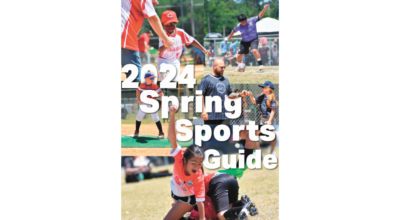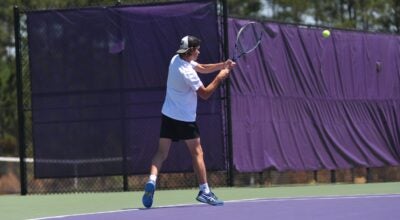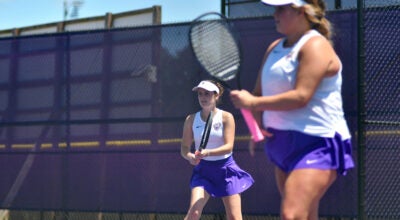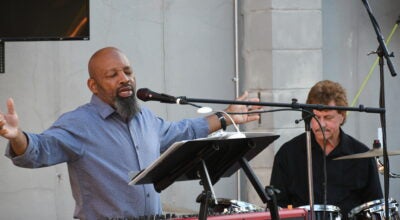Middle school students explore potential career opportunities
Published 4:25 pm Friday, December 13, 2019
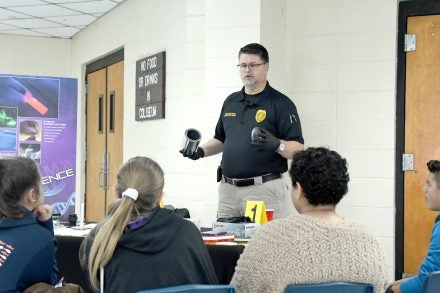
- Christopher Jordan speaks to students at the science table
|
Getting your Trinity Audio player ready...
|
A group of middle school students crowded around a table to watch as fingerprint powder was dusted on a CD some of them had just touched.
Helped by Bainbridge Public Safety Investigator Christopher Jordan, they watched in awe as their fingerprints were revealed.
“Alright, you want to use my handcuffs?” Jordan joked to the student whose fingerprints it belonged to. “You’re going to jail.”
Jordan shared a number of other ways he uses science to track down and arrest suspects, like tracing the source of a tennis shoe imprint. It was just one of the five tables set up to showcase the different career areas in the S.T.E.A.M. (Science, Technology, Engineering, Arts, Mathematics) fields to students Friday at the Decatur County Coliseum.
Sponsored by 1 On 1 Mentoring, a program that seeks to encourage, motivate and educate middle schoolers with positive adult volunteers in the Bainbridge community, the roomful of students moved from table to table to learn about what a career in those fields was like. Community members who worked in the S.T.E.A.M. areas led each discussion with hands-on activities.
“The Georgia Department of Education aims to implement more real world application and STEAM into classrooms,” said 1 On 1 Mentoring Director Alesia Brinson. “It was the goal of 1 On 1 Mentoring to expose students to future STEAM career opportunities. Our hope is that by doing so, students will have a different approach to their studies and a brighter outlook for their futures.”
Vonda Hubbard, CTAE Director and assistant principal at Bainbridge High School, spoke to students about technology. Her table was covered in electronic devices, including multiple different laptops, tablets and smart devices. Thomas Brinson, an aircraft systems integration engineer, worked with students around the engineering table and Mike Albritton had the kids crowding around a mathematics display. Valorie Brinson, a graphics and multimedia lead consultant, had stacks of magazines and pamphlets for students to flip through and discuss.
“When you live in a small town and you’re a student in school, you don’t necessarily have the opportunities to see the applications of what you’re learning,” said retired educator Suzi Bonifay, who was volunteering at the program. “This is a way to take people in our own community, help them see the relevance of what they’re doing. We live in a world of technology. If you are looking at where job openings are in the future, they are in the sciences, they are in technology, engineering, the arts and then again in mathematics.”
Bonifay emphasized the importance of hands-on learning in engaging young minds.
“Kids want to get their hands on it,” said Bonifay. “If you can get them hooked, they will do anything that you ask. But if they don’t see the relevance—if you don’t engage them—it won’t work as well.”
The goal is to expose kids to as many career areas as possible, helping them discover a profession they are interested in pursuing—or the opposite, cluing them in on a field they don’t enjoy. The latter can save a lot of time for students moving forward, said Bonifay.
“To know what you don’t want to do is wonderful,” said Bonifay. “I think this is a great opportunity.”


